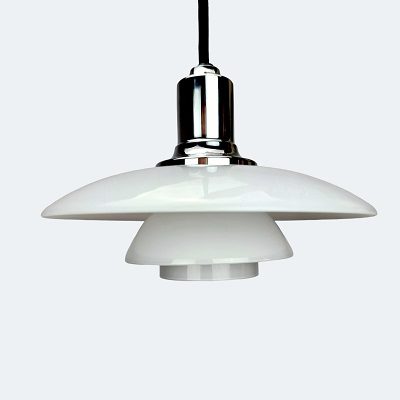Design story
Louis Poulsen Ph5 Pendant Lamp was developed by Poul Henningsen in 1958. The design was a response to many changes made to the shape and size of incandescent bulbs by manufacturers at the time. Henningsen named the lamp after the size of the pendant’s main shade, which is 50 cm in diameter.
At the beginning of world war II Poul Henningsen (or simply PH) worked as head architect of the Tivoli Gardens in Copenhagen. However, his obsession with light made him focus on lamps. He was not a fan of light bulbs and he worked on the premise that the observer should not be exposed directly to harsh electric light. A lot of work went into trying to replicate the soft and relaxing glow of petroleum lamps that PH grew up with
When the lamp was introduced, he wrote about how he had lost faith that the manufacturers of incandescent light bulbs would ever learn to consider common sense or put the customer first: “I have accepted fate, and with Louis Poulsen´s permission I have designed a PH fixture, which can be used with any kind of light source, Christmas lights and 100 W metal filament bulbs. Although a fluorescent tube would be too much to ask in the existing form!” Henningsen wanted to improve the colour reproduction characteristics of the light source in the Louis Poulsen Ph5 Pendant.
Small red and blue shades were therefore inserted to supplement the colour in the part of the spectrum where the eye is least sensitive – the red and blue areas – thereby subduing the light in the middle yellow-green region where the eye is most sensitive. At the time, no one knew that the Louis Poulsen Ph5 would become a design icon that remains 100% glare-free, regardless of how the light is installed or which light source is used.
The red and blue rings are however no longer needed to achieve superior light quality, as today’s light bulbs reproduce daylight far better than in the 1950s.








